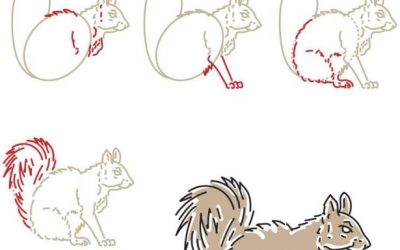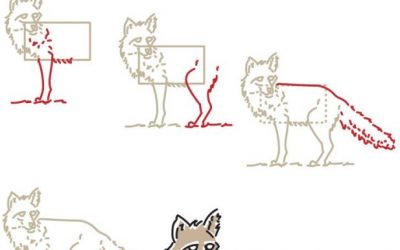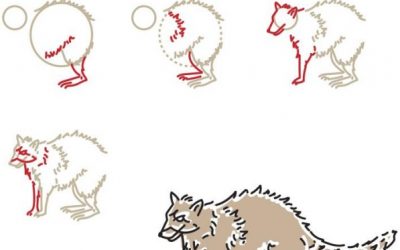
MATERIALS
• A primed canvas board with a light orange mix of acrylic paint
• Paints are a mix of Winsor and Newton Artists oils and Art Spectrum oils:
• Titanium White
• Ultramarine Blue
• Rose Madder
• Burnt Umber
• Cadmium Yellow
• Cadmium Orange
• Indian Yellow
• Yellow Ochre
• Indian Red
• Brushes
• A selection of firm flat brushes of assorted sizes and makes with a couple of liner brushes
• Mediums
• Art Spectrum odorless solvent
• Refined linseed oil 2 mixed with turps
STEP ONE
Draw in the main structure and shapes with no detail, just the main shapes with a mix of Ultramarine Blue, Rose Madder and small touch of odorless turps. The tree trunk bark is started with a mix of Titanium White and Ultramarine Blue with a touch of Indian Red.

STEP TWO
Block in shapes with Ultramarine Blue, Indian Red and Burnt Umber for the trunks, and a mix of Ultramarine Blue, Indian Red and Yellow Ochre and White for the foliage, all with a touch of turps to dry quickly.

STEP THREE
Paint in the large foliage shapes and foreground shapes with varied mixes of Ultramarine Blue, Indian Red and Yellow Ochre with a touch of Cadmium Yellow for some of the foliage and Yellow Ochre and Indian Yellow and White for the dry grass.

STEP FOUR
Once most shapes are worked in, start to refine the painting without painting it too tight.

STEP FIVE
The sky is next, painted with a mix of Ultramarine Blue, Indian Red, and a touch of Rose Madder. The main tree has a mix of Cadmium Orange and Indian Yellow in the lighter places with a touch of Titanium White.

FINAL STEP
Refine areas that require it without overpainting, light and shade being important.

ARTIST’S HINTS AND TIPS
• If there’s only one message I can convey to anyone reading this to further your artistic ability it is this – draw and paint from life and what you see in front of you whenever you can.
• A good drawing gives you the basis of a good painting, and the only place to start, I believe, is to draw what is right in front of you in real life.
• We see in 3D so why not draw it and paint it how we see it?
• We see perspective, foreground, distance, colour, tone, form and atmosphere different to how a camera reproduces it.
• There is a place for photos, and I have painted from many of my photos over the years, and still refer to them, but to me it doesn’t compare to drawing or painting the scene from life. When drawing or painting a work on location, everything is alive and changing, and you capture the true form and perspective as your eye sees it.
• Light changes, shadows move, clouds could be dancing across the landscape, a figure may pass by or animals may appear, and you are out in what nature so freely gives us to appreciate, so why not try and capture some of that real life in your work?
• It is important to capture what you want in your painting, especially the light and shadows, form and atmosphere if painting a landscape, and of course, this all depends on what you want to paint and how you want to paint a scene, as everyone’s perception and approach is different and personal.
• I usually take a photo of the scene for studio reference if needed, but don’t rely on the photo too much when painting, rather I try to remember what it was like on site. Your drawing doesn’t have to be too detailed to paint from. Reduce the scene you want to paint into shapes and outlines rather than the whole busy scene you see, and you will find it a whole lot easier.
• I generally have a sketchbook handy, or a piece of paper, charcoal, pen or pencil to quickly capture anything that strikes me to record.
• The important thing is that you get the scene down as your eye sees it.
• I paint on site a lot and also sketch on site to paint from later. Go ahead and get out there, you won’t look back …





